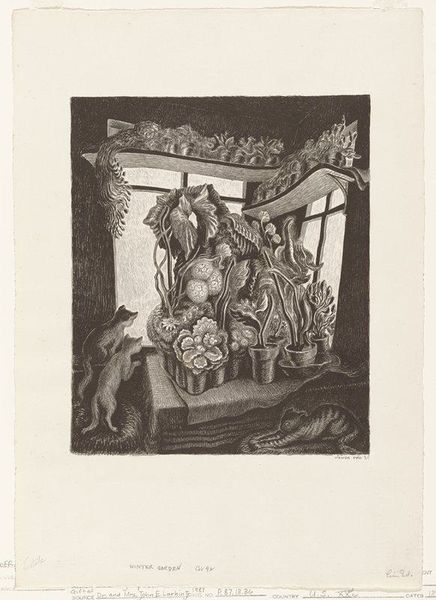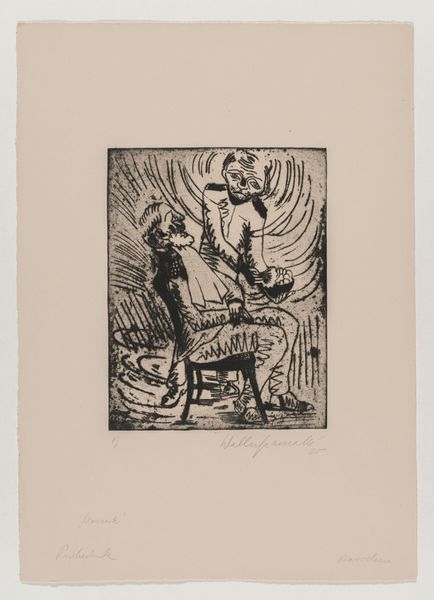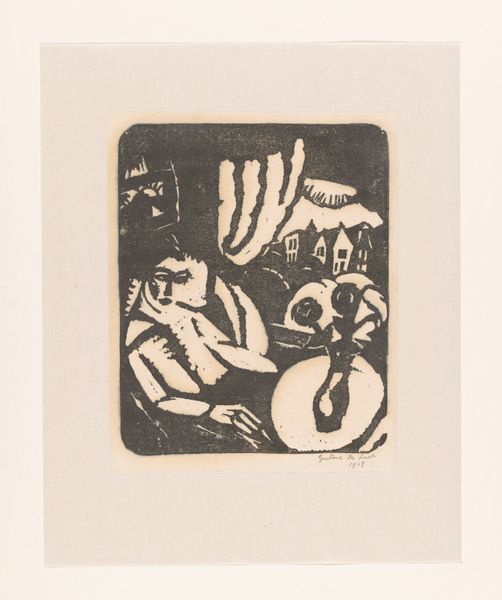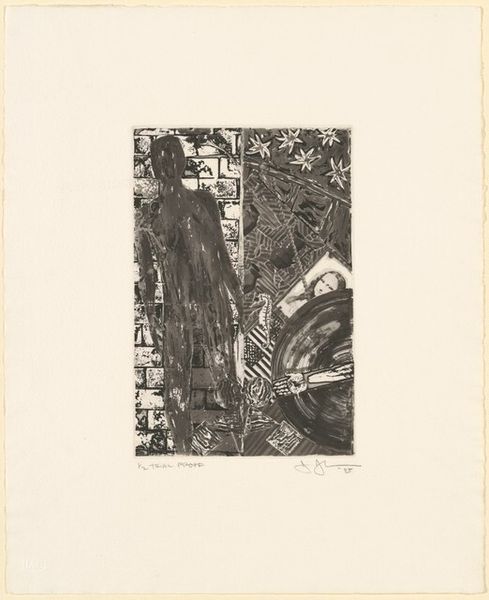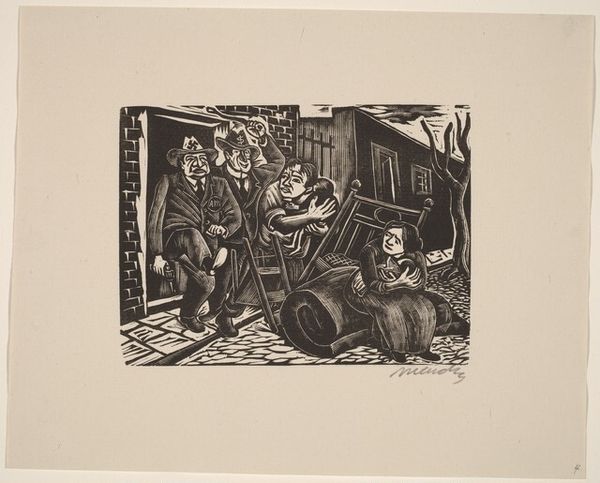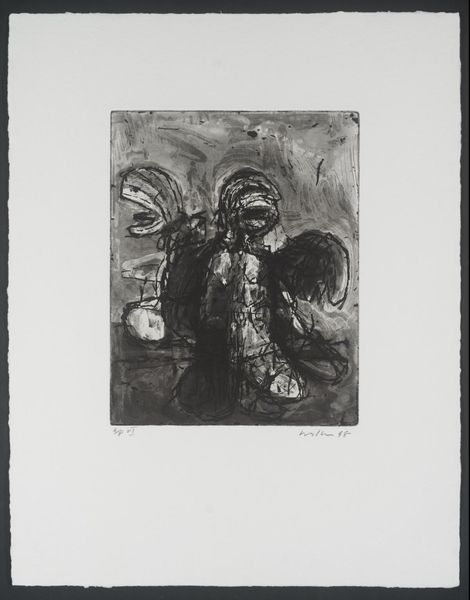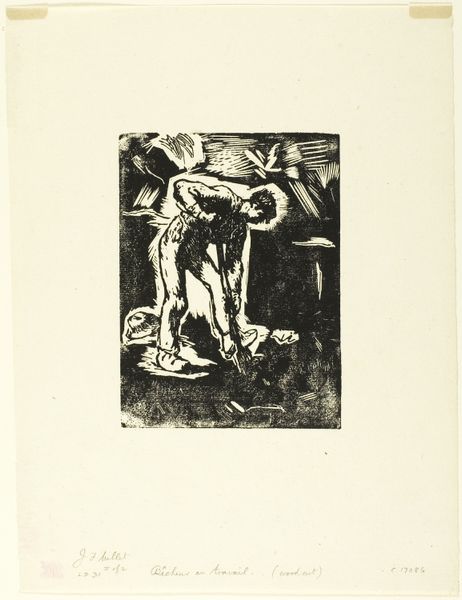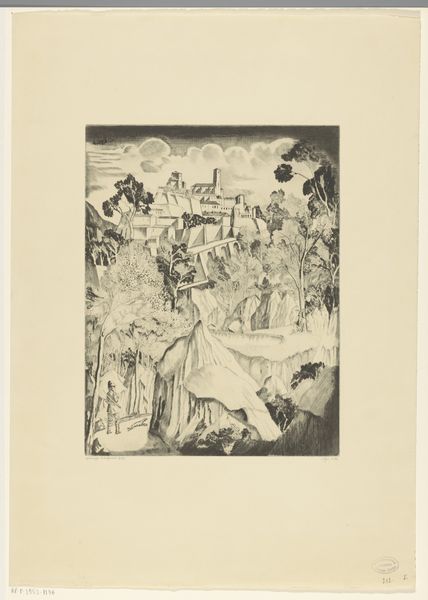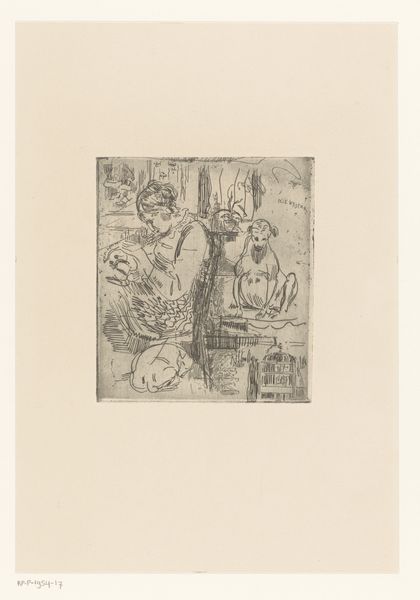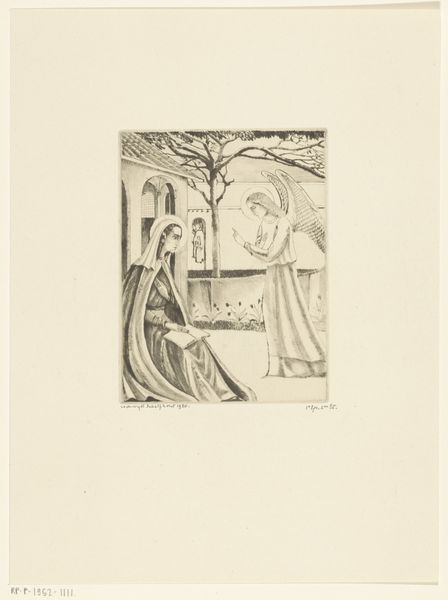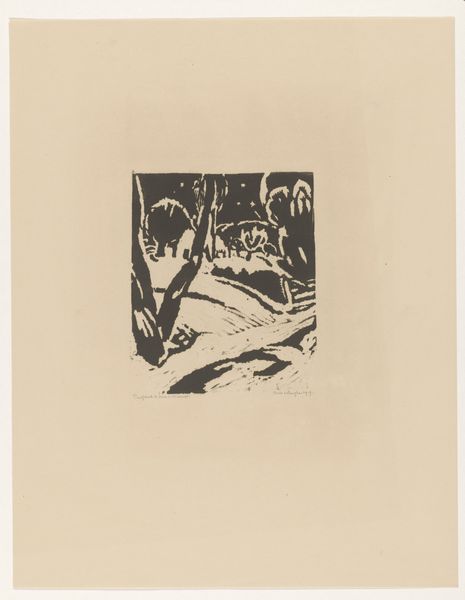
graphic-art, print, woodcut
#
graphic-art
#
ink drawing
#
narrative-art
#
pen drawing
# print
#
figuration
#
woodcut
#
mexican-muralism
Copyright: National Gallery of Art: CC0 1.0
Editor: Here we have Leopoldo Méndez's 1943 woodcut, *Dreams of Paupers.* The stark contrast between light and dark really creates a mood, a solemn, almost grim atmosphere. What social context was Méndez responding to with this piece? Curator: It is very solemn indeed. Consider the period: Méndez created this during a time of significant social and political upheaval in Mexico. The Mexican Revolution, while officially over, left a legacy of inequality. Think about the muralist movement, its focus on public art, and reflecting the lives of ordinary people. Méndez, deeply involved in this, uses his prints as accessible, political statements. What do you notice about the composition? Editor: Well, there’s a clear divide, visually and thematically. A large group is seated at a table, seemingly waited upon, and above, is a framed scene of violence. Then there are other figures seemingly providing what the table-sitters need, but these are very different stations in life. Curator: Precisely. The division you notice embodies this social disparity. The print’s existence itself becomes a political act, doesn’t it? By choosing printmaking, Méndez made his work easily reproducible, thus, easily accessible to a wide audience, including the working class. How does the woodcut medium affect the message? Editor: It gives it this immediate and bold quality, doesn't it? Less finesse, more directness. It underscores the gravity and urgency of the situation, almost like a newspaper editorial. Curator: Exactly. Consider also the print’s public function; prints can be disseminated widely as leaflets and displayed easily, contrasting the relative inaccessibility of other artworks and therefore more elitist, traditional mediums. Méndez intended to influence the masses to create collective agency to overcome the oppression represented here. Editor: So the piece is as much about political agitation as it is about aesthetic expression? Curator: The two cannot be easily separated here. Méndez and other artists felt a strong civic responsibility to raise consciousness of this disparity through public imagery. Editor: I never considered the medium as part of the message so literally. I'll definitely look at art from that point of view from now on! Curator: Considering the role of art as a social mirror reflecting on contemporary issues definitely deepens one's understanding and appreciation of the piece and artist.
Comments
No comments
Be the first to comment and join the conversation on the ultimate creative platform.
